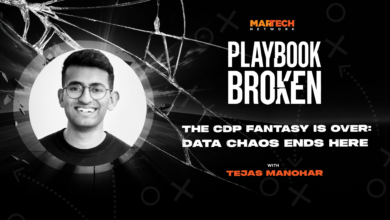Master Your SEO Content Audit: Boost Performance & AI Visibility

▼ Summary
– Content is a fundamental pillar of SEO that builds authority and adapts to AI and LLM-driven search visibility.
– Traditional SEO content audits often fail by being too shallow or overly detailed, requiring a balanced, actionable approach.
– A modern content audit should be performance and purpose-driven, focusing on business impact and adapting to changing search behaviors.
– The proposed audit framework includes defining purpose, segmenting content, scoring based on purpose, performance, and potential, and optimizing for search and LLMs.
– Audits must prioritize actions based on effort versus impact and track business metrics like conversions rather than just search rankings.
A modern SEO content audit is essential for boosting performance and achieving visibility in today’s AI-driven search environment. Content has always been a cornerstone of search engine optimization, but its role is evolving rapidly. Rather than focusing solely on keywords, we must now consider how content performs across large language models and integrated search results. This shift demands a new approach to auditing, one that moves beyond outdated methods to deliver genuine business impact.
Many organizations find their content audits fall into one of two problematic categories. Some are too superficial, relying entirely on automated tools without meaningful analysis or perspective. Others become so mired in data and detail that they lose practical value, making it difficult for search engines and AI systems to grasp the core message. Neither shallow checklists nor overwhelmingly complex reviews provide the actionable insights needed in the current landscape.
The emergence of AI and LLMs has fundamentally altered content discovery and interaction. Relying on historical performance data is no longer sufficient, especially for B2B and lead-generation companies with extended sales cycles. Wasting resources on content that doesn’t resonate with either human audiences or AI systems represents a significant missed opportunity. Marketing leaders increasingly recognize that content which once ranked well for keywords may fail to achieve visibility in AI-powered search environments.
A performance-driven, LLM-aware content audit framework offers a more effective alternative to traditional approaches. This methodology prioritizes actionable outcomes while accounting for how modern search systems evaluate and utilize content.
Begin by clearly defining your audit’s purpose and desired outcomes. Whether you’re aiming to improve LLM visibility, increase conversions, or streamline legacy content, establishing what “success” looks like is crucial. This might include specific targets for visibility, traffic, authority, or engagement metrics.
Next, segment your content by type and funnel stage. Avoid applying uniform standards across different content categories. Separate blog posts from core landing pages and gated assets, then analyze how each piece functions within your customer journey. This dual filtering system ensures you’re evaluating content based on its specific role and intended impact.
Develop a custom scoring system around three key areas: Purpose, Performance, and Potential. Rate each content piece on a simple scale to assess its original intent, current results, and future opportunities. Purpose examines whether content aligns with brand positioning and business goals. Performance measures tangible outcomes like traffic, conversions, and engagement. Potential evaluates opportunities for improvement, including AI visibility enhancements and repurposing possibilities.
The decision phase requires applying a business-focused lens to each content item. Determine whether to remove underperforming content, combine overlapping pieces, update materials needing improvement, or keep high-performing assets as-is. Regular content updates are particularly important for maintaining AI visibility, as LLMs tend to favor current, authoritative sources.
For content you choose to keep or update, optimization should address both traditional search and AI systems. Focus on user intent rather than keyword density, while ensuring your content provides clear, authoritative answers with proper structure. External validation through public relations and other channels can further strengthen your authority signals.
Create a prioritized action plan that considers implementation effort versus potential impact. Factor in your team’s capacity, skills, and resource constraints, then organize the work into manageable sprints or milestones. This prevents the audit from becoming an endless project while ensuring steady progress.
Finally, track business metrics rather than just search metrics. Look beyond rankings and traffic to monitor conversions, form submissions, and demo requests. These indicators better reflect how content influences actual business outcomes and customer journeys.
Content audits remain valuable when approached with the right methodology. By balancing depth with actionability and focusing on measurable business results, organizations can adapt to the changing demands of both search engines and AI systems. The framework outlined here provides a practical path toward content that performs well across all visibility channels while delivering genuine value to your audience.
(Source: Search Engine Journal)





